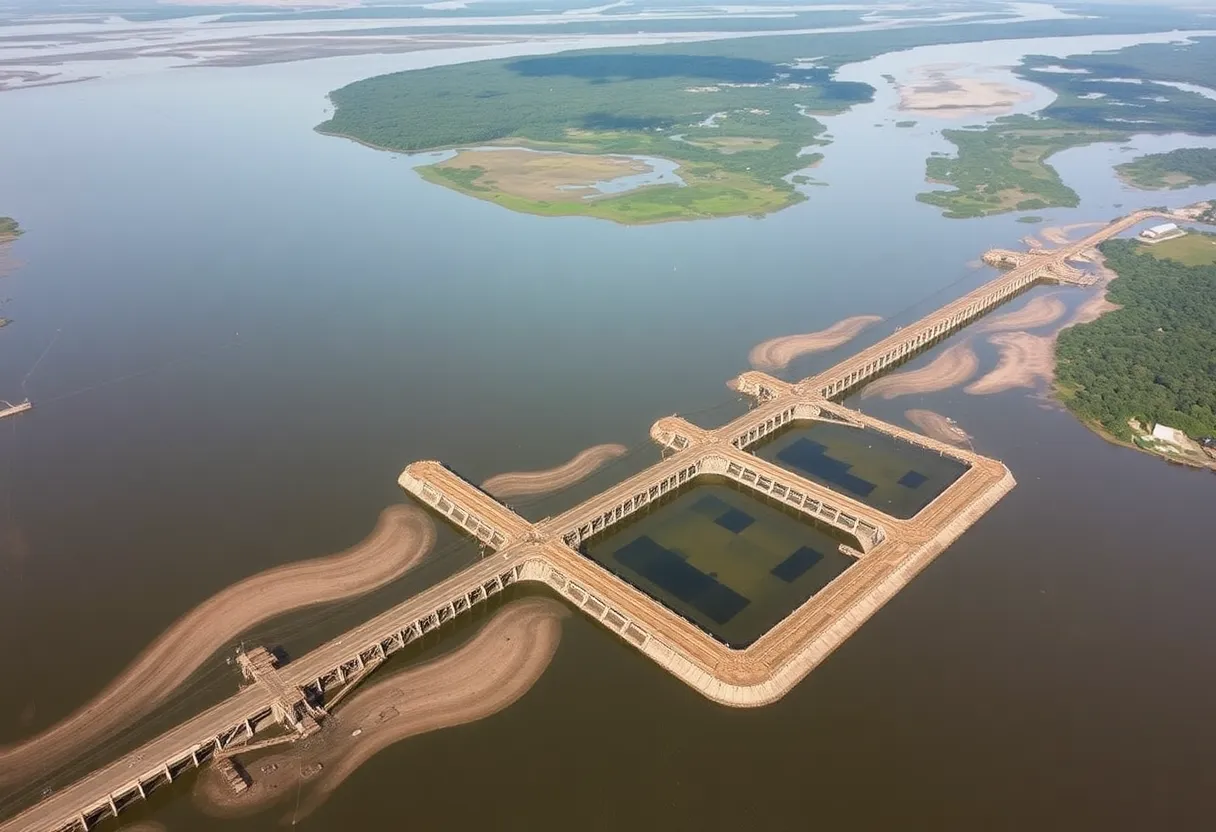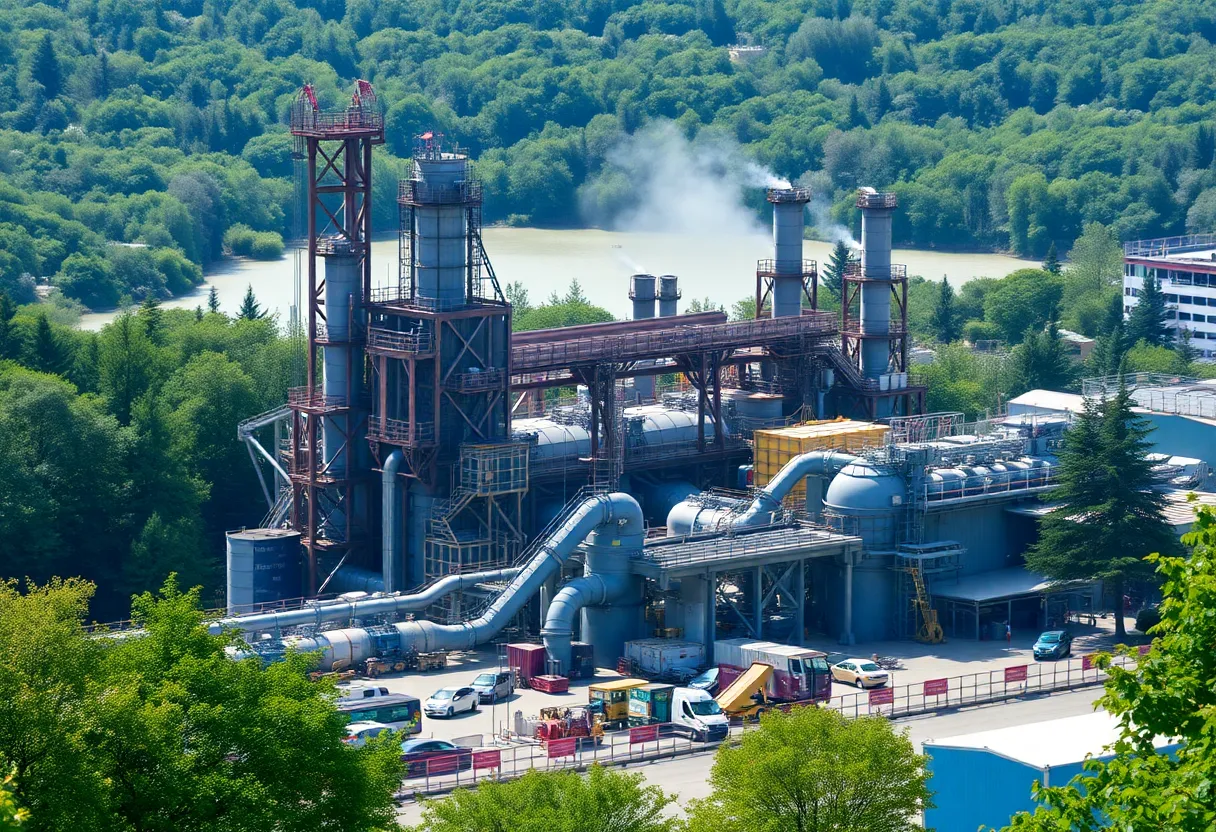News Summary
The Old River Control Structures are essential for managing Mississippi River flow, but they face unprecedented challenges from climate change, sediment buildup, and federal funding cuts. Experts warn that failure of these structures could lead to devastating impacts on Louisiana’s economy and ecological health. With new pressures from saltwater intrusion and intense rainfall, the future of Louisiana’s water management hangs in the balance as local officials seek effective long-term solutions.
Lettsworth, Louisiana – The Old River Control Structures remain a critical line of defense against potential changes in the flow of the Mississippi River. If these structures were to fail, the consequences could be devastating, not only for the state of Louisiana but also for the nation as a whole. According to the U.S. Army Corps of Engineers, without these critical controls, Louisiana would not retain its current geographical and economic existence. The federal mandate requires that 70% of the Mississippi River’s flow must be directed downstream while the remaining 30% diverts into the Atchafalaya River.
The Old River Control Structures were established after the catastrophic flooding in 1973 exposed vulnerabilities in the region’s water management. A subsequent failure of a protective wall led to the construction of the Auxiliary Structure, which was designed to manage increased water flow capacity. The Low Sill Structure, a component of this complex, can be adjusted to regulate water levels, especially during high water events, to prevent overflow into the surrounding areas.
However, the Old River Control Structures face new, unprecedented challenges as the effects of climate change and evolving water management tactics exacerbate existing vulnerabilities. Among these new challenges are saltwater intrusion from the Gulf of Mexico, complications arising from changing riverbed conditions, and increased rainfall intensity. As these issues grow more serious, there is a rising concern that the extreme flooding conditions could potentially overwhelm the Old River Control Structures.
The situation has been further complicated by federal funding decisions. The Trump administration’s cessation of funding for a comprehensive study on the lower Mississippi’s future has led to uncertainty regarding effective long-term management strategies. This lack of a thorough evaluation raises alarms among local officials about the implications for the area’s economic stability and ecological health, particularly in vital regions like New Orleans.
The economic ramifications of the Old River Control Structures extend far beyond the immediate geography. Southern Louisiana’s economy is reliant on river shipping and other industries that depend on stable water flow. Altering the water flow has ignited debates among city leaders, port officials, and fishermen over potential ecological impacts and economic outcomes. Sediment accumulation below Old River has elevated the riverbed, leading to concerns about increased pressure on the structures and an impedement in the river’s natural flow.
If the Mississippi River were to change its course, the immediate threat would be to New Orleans, which could see a drastic reduction in its drinking water supply in as little as two weeks. This scenario also poses a significant flooding risk to communities in the Atchafalaya region, such as Morgan City. The U.S. Army Corps of Engineers recognizes this sediment build-up and actively conducts analyses to monitor sediment levels impacting the Old River’s operations.
Additionally, officials from Mississippi have expressed concerns regarding limitations on the Bonnet Carre Spillway, which is essential for relieving pressure on levees during periods of high water. An assessment of flow management through the Old River may provide critical insights into dealing with issues like saltwater intrusion and preserving the ecological balance of the surrounding areas.
Historically, data has shown an increase in the frequency of flooding and droughts, further complicating water management strategies. For the first time in decades, operational decisions about the Old River may require Congressional approval to amend the designated water flow percentages, reflecting the increased scrutiny over river management practices.
The U.S. Army Corps of Engineers is actively implementing monitoring systems to anticipate the hydrological consequences of water movement across interconnected systems. The Port of Morgan City, in particular, faces economic risks from heightened sediment levels and potential flooding tied to changes in Old River operations. The importance of the Old River Control Structures highlights the interconnectedness of local ecosystems and the national economic dependencies reliant on effective river management and water flow stability.
Deeper Dive: News & Info About This Topic
- NOLA: Mississippi River Changing Course
- Wikipedia: Mississippi River
- NOLA: Old River Control Structure Overview
- Google Search: Old River Control Structures
- NOLA: Impact of Climate Change on River Management
- Encyclopedia Britannica: Climate Change

Author: STAFF HERE NEWORLEANS WRITER
The NEW ORLEANS STAFF WRITER represents the experienced team at HERENewOrleans.com, your go-to source for actionable local news and information in New Orleans, Orleans Parish, and beyond. Specializing in "news you can use," we cover essential topics like product reviews for personal and business needs, local business directories, politics, real estate trends, neighborhood insights, and state news affecting the area—with deep expertise drawn from years of dedicated reporting and strong community input, including local press releases and business updates. We deliver top reporting on high-value events such as French Quarter Festival, New Orleans Jazz & Heritage Festival, and Essence Music Festival. Our coverage extends to key organizations like the New Orleans Chamber of Commerce and Greater New Orleans, Inc., plus leading businesses in energy, healthcare, and education that power the local economy such as Entergy, Ochsner Health, and Tulane University. As part of the broader HERE network, including HEREShreveport.com, we provide comprehensive, credible insights into Louisiana's dynamic landscape.




